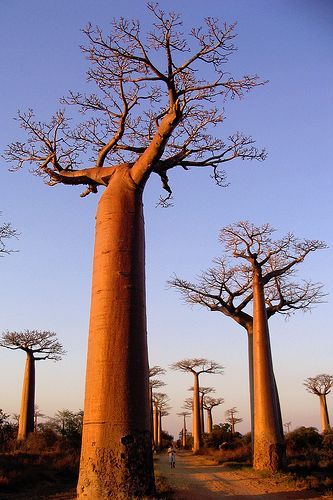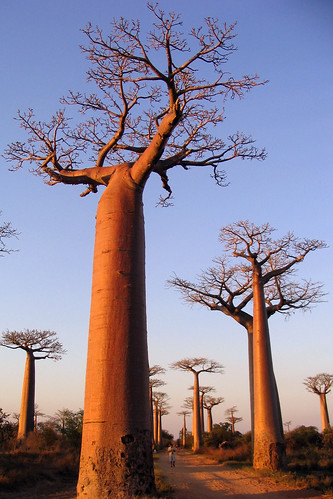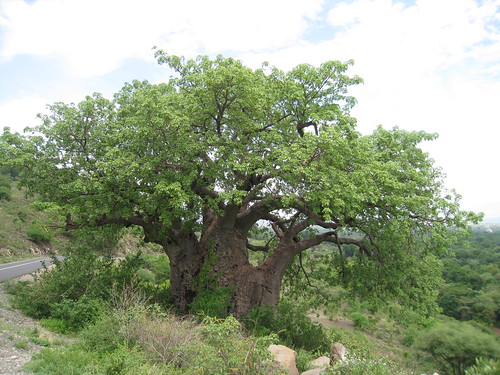
Baobab – Root and Branch Review
Baobab is a remarkable tree with striking appearance identified by it’s swollen trunk which stores water. Slow growing the tree is believed to live for centuries but has no aging rings in the trunk.
Key Features of the Baobab
- Latin name – Adansonia digitata Common names – Upside down tree, boab, dead-rat-tree, boaboa or bottle tree
- Height – 30-70 feet
- Type of tree – Deciduous
- Leaves – dark green glossy hand like leaves with 5-7 fingers
- Flowers – Solitary large scented white to cream
- Fruit – ovoid, brown, hairy capsules of black seeds
- Bark – Grey-brown and fibrous. No annual growth rings of trunk.
- Family – Malvaceae
Origins and Distribution of the Baobab
- Native to Madagascar and central Africa.
- The tree is adapted to arid conditions and is also found in India.
Uses and Attributes of the Baobab
- Fruit and leaves are edible. The seeds are used to thicken soup.
- Water is collected in the clefts of branches.
- The fibrous bark is used to make mats and fishing nets
Gardeners Tips for the Baobab
- The tree is able to survive bark ringing.
- The large white strongly scented flowers attract pollinating bats – alas not in my garden.
- Seeds are available to grow bonsai trees.
Other types of Baobab and key species
- There are 7-8 key species of Adansonia.
- Adansonia digitata L. – African Baobab, Adansonia grandidieri Grandidier’s Baobab, Adansonia gregorii Boab or Australian Baobab Adansonia madagascariensis– Madagascar Baobab Adansonia perrieri – Perrier’s Baobab Adansonia suarezensis Adansonia Za. – Za Baobab .
Baobab comments from elsewhere
- ‘The Baobab is called the Tree of Life with good reason. It is capable of providing shelter, food and water for the animal and human inhabitants of the African savannah regions.
The cork-like bark is fire resistant and is used for cloth and rope. The leaves are used for condiments and medicines. The fruit, called “monkey bread”, is rich in vitamin C and is eaten. The tree is capable of storing hundreds of litres of water, which is tapped in dry periods.
Mature trees are frequently hollow, providing living space for numerous animals and humans alike.There are also numerous superstitions amongst native African people regarding the powers of the tree. Anyone who dares to pick a flower, for instance, will be eaten by a lion. On the other hand, of you drank water in which the seeds have been soaked, you’d be safe from a crocodile attack.’ From Baobab solutions for more information
Credits
baobabs by asfd01 CC BY-NC 2.0
“Baobab by sociate CC BY-SA 2.0
Baobab Africain by dinesh_valke CC BY-NC-ND 2.0 ‘The Baobab has long provided people with material for cloth, rope, soap, dye, glue, fodder, and medicine. In West Africa, the young nutritious leaves are cooked and eaten like spinach.’
Baobab Tree by K W Reinsch CC BY-NC 2.0



